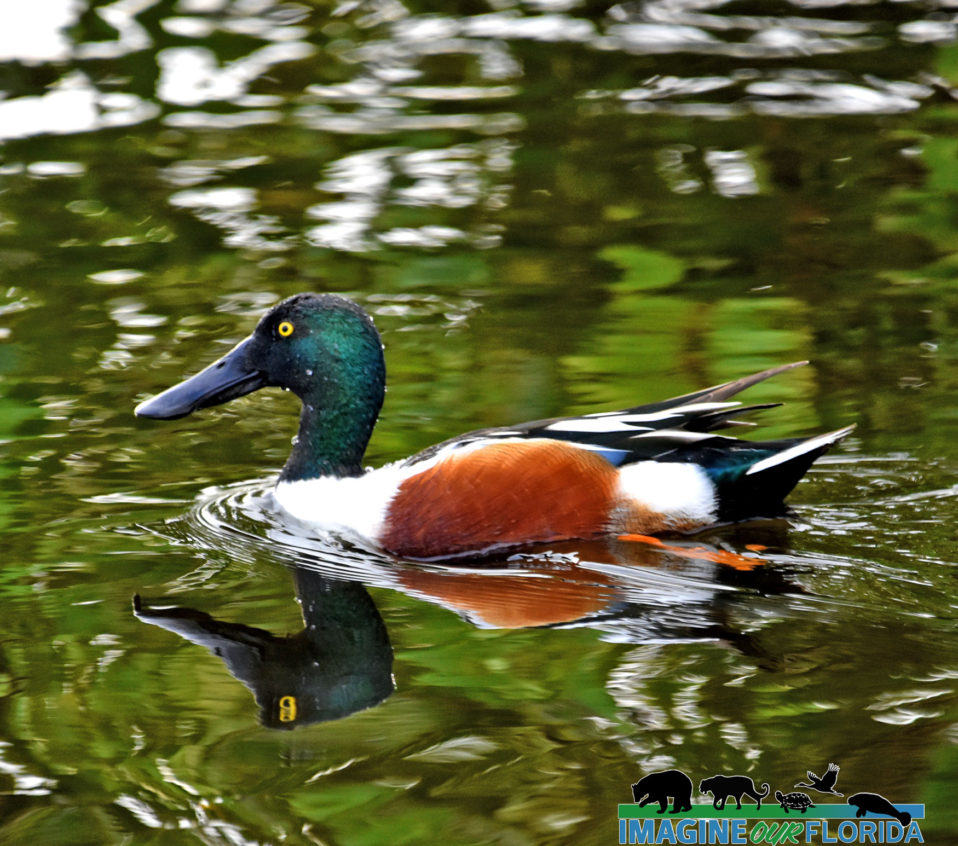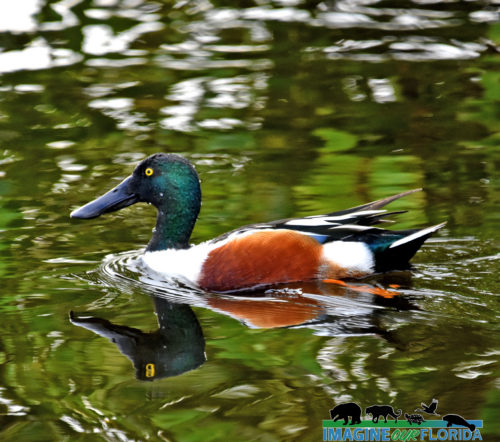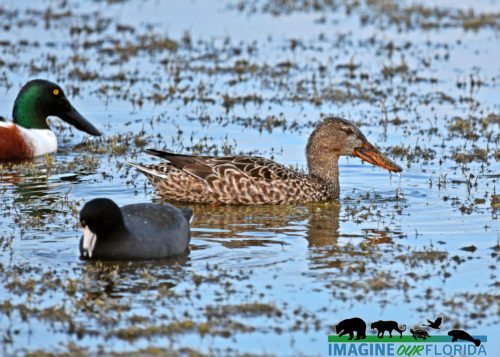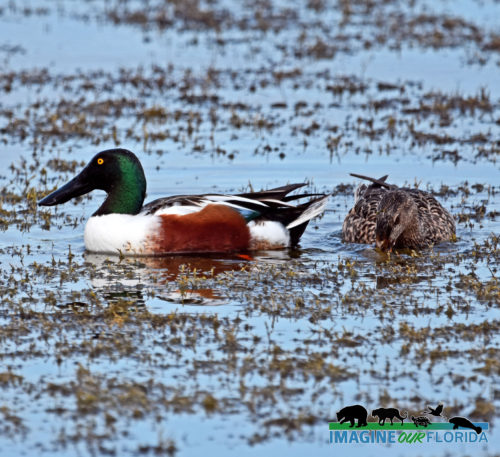The Northern Shoveler, Spatula clypeata, is a wide-ranging duck species and a winter resident of Florida. After spending the summer months breeding in the west-central part of the United States running north all the way up to Alaska, Northern shovelers move south as winter approaches. But they don’t just occur in the Americas. This duck can be found across Europe and Asia, and winter down into Africa and India.
The males are strikingly colored, with green heads similar to a mallard, orange bodies, and a white chest. The females are mottled brown, similar to female mallards. But there is no mistaking these for mallards. One look at their large, flat, spoon-like bill immediately gives them away.
And it’s that very bill that allows them to feed. These ducks feed on tiny zooplankton and other small invertebrates and seeds. They sweep their head back and forth, filtering the water with tiny projections called lamellae. These lamellae work like a colander to sift out their food from the water. Oftentimes, you may observe large groups of shovelers swimming rapidly in a circle. This behavior creates a vortex that stirs food up from deeper waters allowing the group to feed.
The Northern Shoveler is one of the most common duck species found in the US. With populations over 5 million, it only trails mallards and blue wing teals for overall abundance. Found in shallow wetlands and marshes, in Florida, you can enjoy these visitors throughout the winter. They can be easily seen in places such as Merritt Island National Wildlife Refuge, Lake Apopka Wildlife Drive, and many other easy-to-access wetlands.
As the weather begins to cool, head out and enjoy this species, as well as all the other birds who come down to visit us during the winter months.





Recent Comments